
Textiles through Time
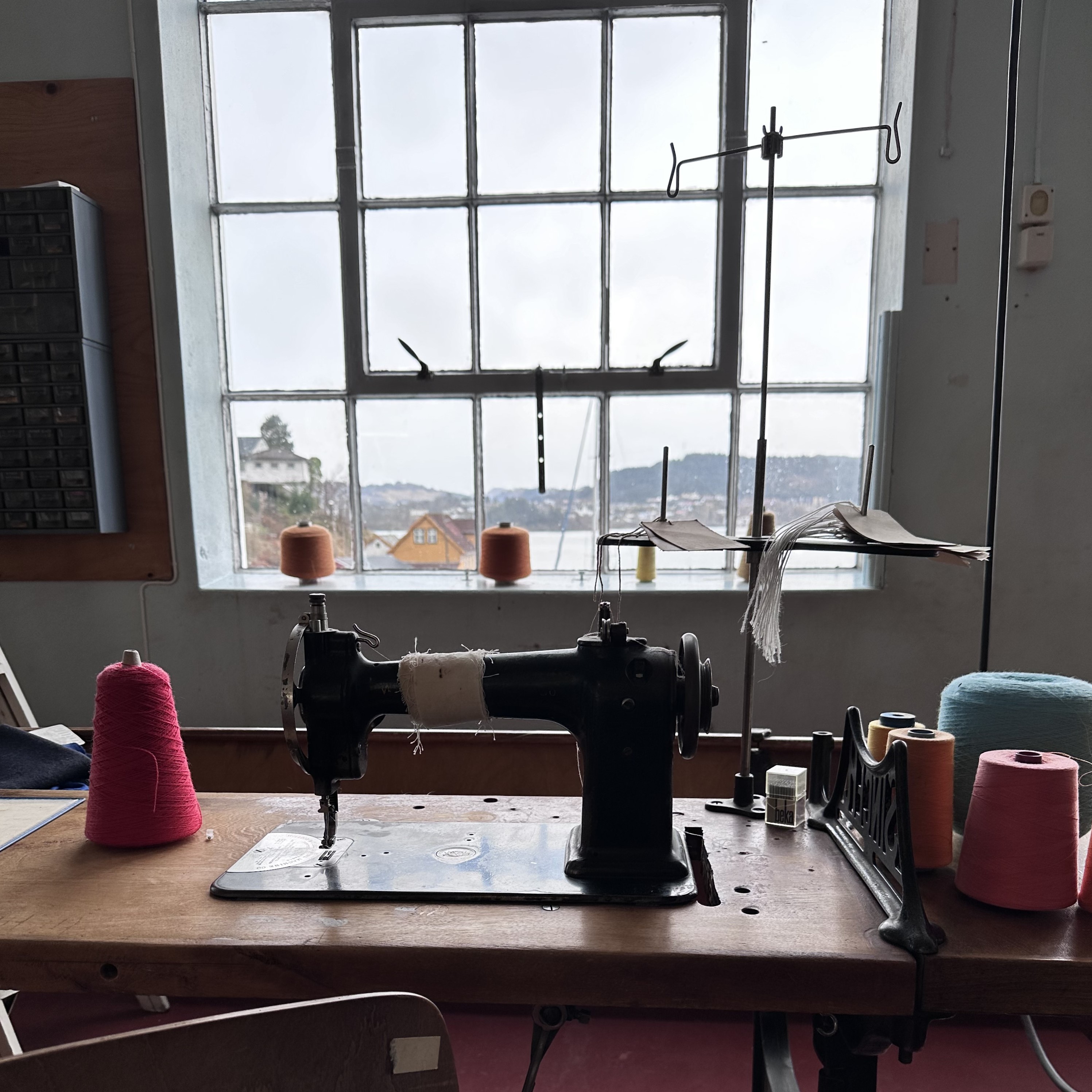
The industrial revolution forever changed the way people live and create. In Bergen, Norway, Liz O'Brien visited a knitting factory museum to get a deeper understanding of textiles through time.
Yesterday I visited the Salhus Tricotagefabrik, a former textile mill and industrial heritage site just outside Bergen. The textile industry was among the first large scale industries to be established in Norway, with Bergen being central to its development.
The factory at Salhus is unique in that it was one of the first fully mechanized knitwear factories in Norway when it was established in 1859. It became (and stills stands) as an important ambassador of the cultural and economic changes taking place at the time: the transformation from an agricultural society to a modern industrial nation. For more than 130 years, Salhus Tricotagefabrik produced woolen socks, sweaters, and sportswear. They were known especially for producing durable, everyday garments and their brand Krone Maco became a staple in the Norwegian wardrobe.
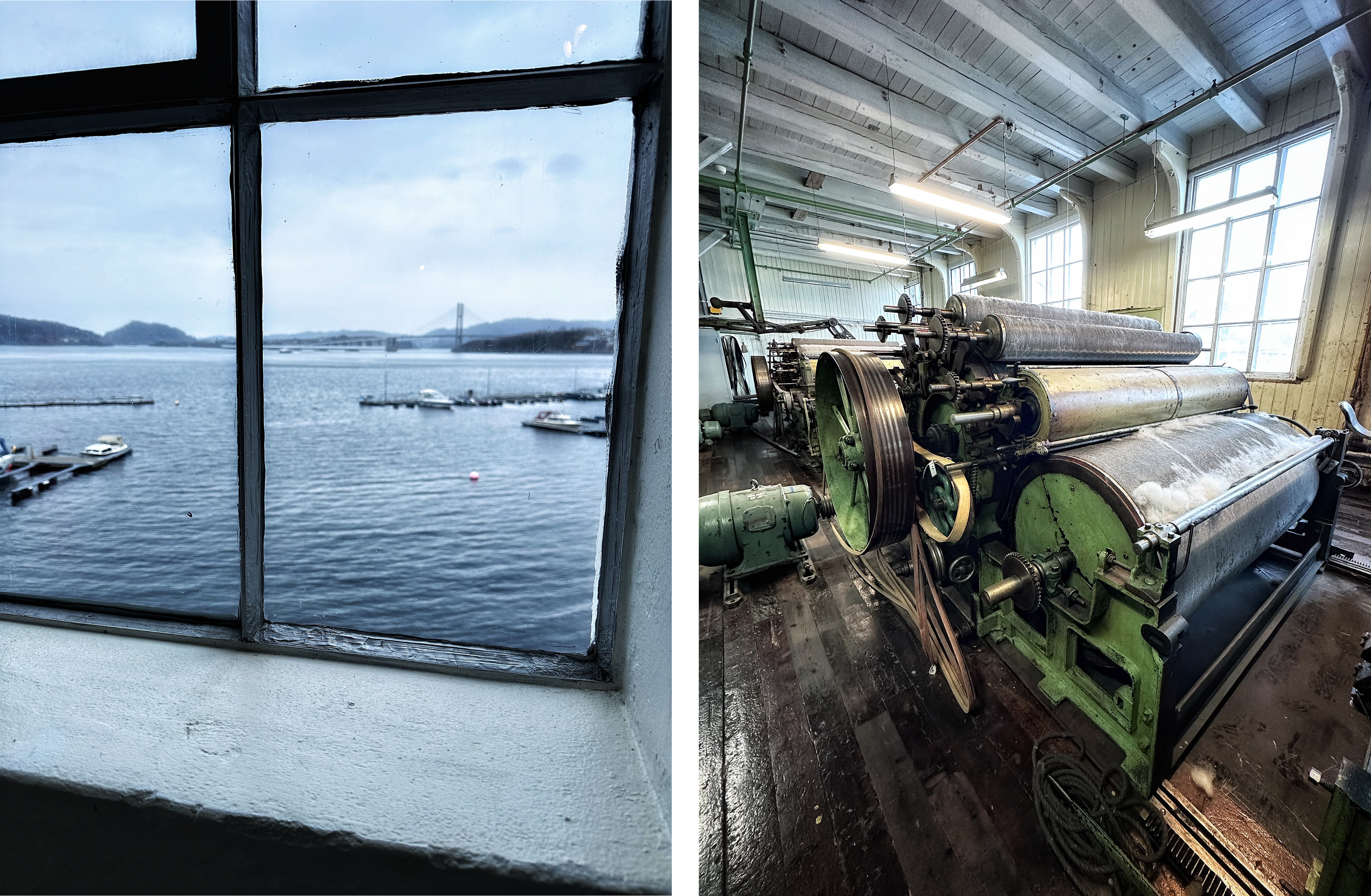
Left: Harbor view where raw wool was delivered by boat directly to factory. Right: One of the many wool carding machines, which produced large batts of wool later to be split into plates of unspun roving.
With a the declining textile industry and overseas competition, the factory shut down in 1989. However, a vision for preserving this piece of Norwegian textile heritage was already in place. Salhus was chosen as site of preservation, mainly because of its authentic premises, the surrounding social framework of worker housing, and the schoolhouse and nursing home for former factory workers, in addition to the already preserved machinery, equipment, and company archives.
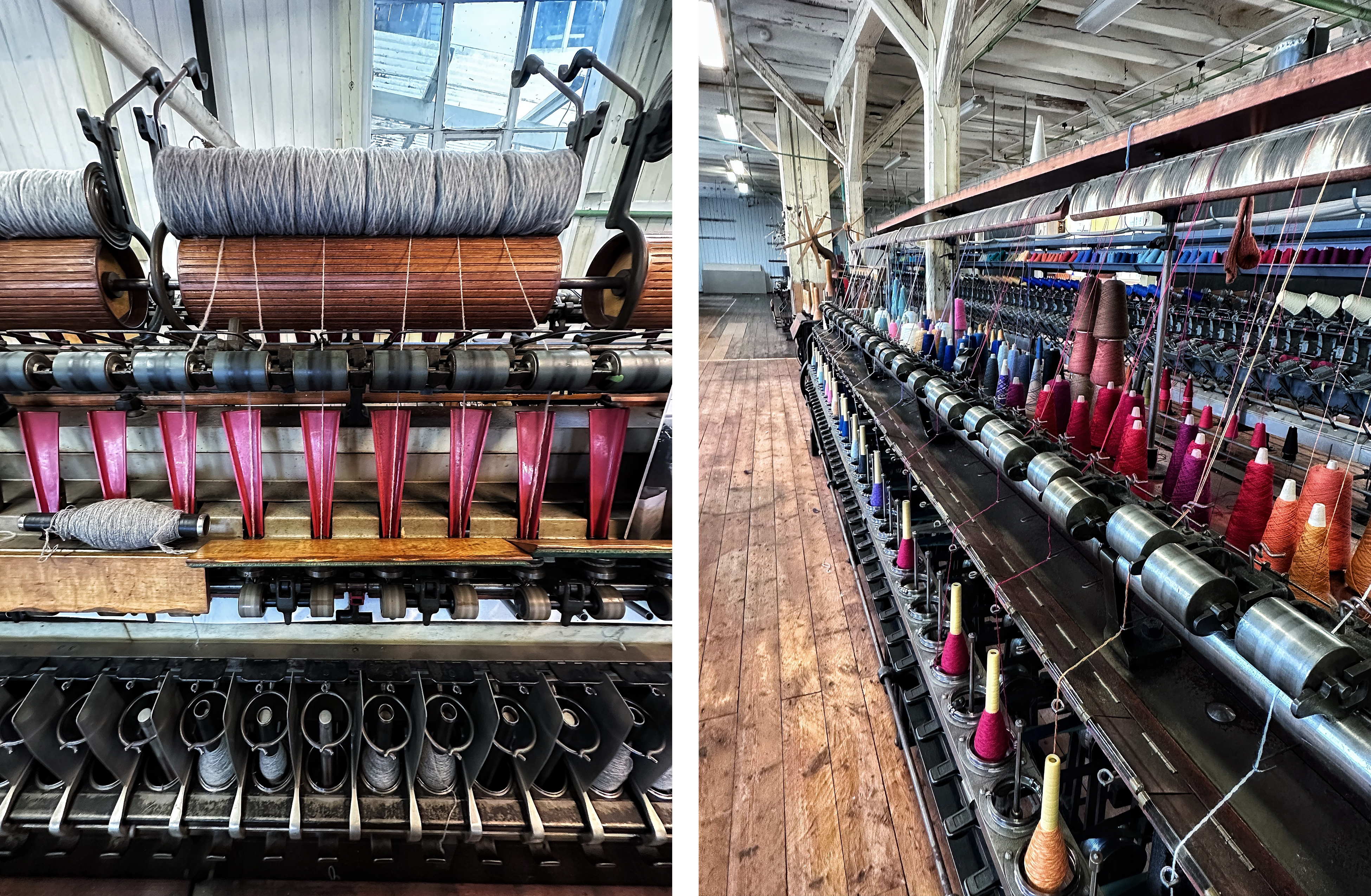
Left: Spinning machine where roving was spun onto spools in a single ply. This machine was about 100 feet long and managed by two people (usually young boys between 12-13 just starting out) moving back and forth constantly monitoring and changing the spools. Right: Plying machine, also about 100 feet long. Yarn from 2-3 cones were spun together. The colorful wool pictured here is from a nearby woolen still in operation and yarn plied together during tours is sold in the museum’s gift shop.
Today, the museum serves to educate visitors about the rich industrial textile history of Norway, allowing visitors to follow the preserved production line, experiencing the steps of how garments were made from sorting, washing, and carding wool and cotton to dyeing, spinning, knitting and sewing the finished products. Having spent a bit of time processing wool by hand, I can appreciate the appeal of the ease as well as increased productivity with the aid of machinery.
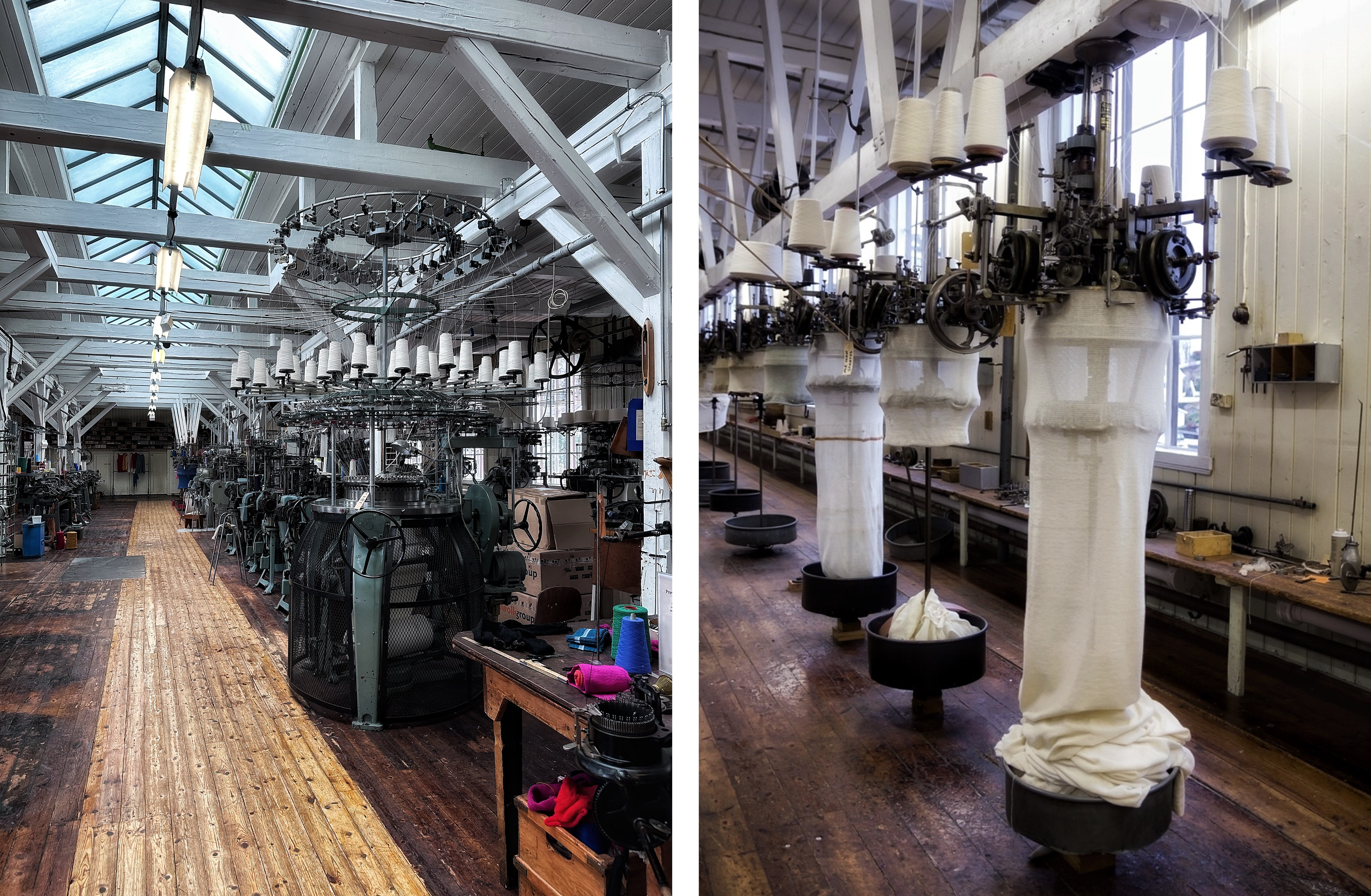
Left: Knitting machines - this room was filled with about 30 circular knitting machines, each calibrated to work with a certain weight of yarn. The sock machines could knit a single sock in 3 minutes! Right: Circular knitting machines that produced long tubes of cloth to later cut and be sewn into finished garments.
Up to this point, much of my time in ADP and Scandinavia has been focused on learning about and seeking out handcraft, but I’d be remiss it if I didn’t also spend time understanding how textiles have been shaped over time. Walking among and witnessing the equipment in action is no less impactful than processing wool or knitting something by hand. Even though the work was mechanized, it is just as laborious as goods and wares made by hand. Countless hours were spent feeding wool and spools of yarn to machines, not to mention cutting and sewing finished garments while the factory was still in operation.
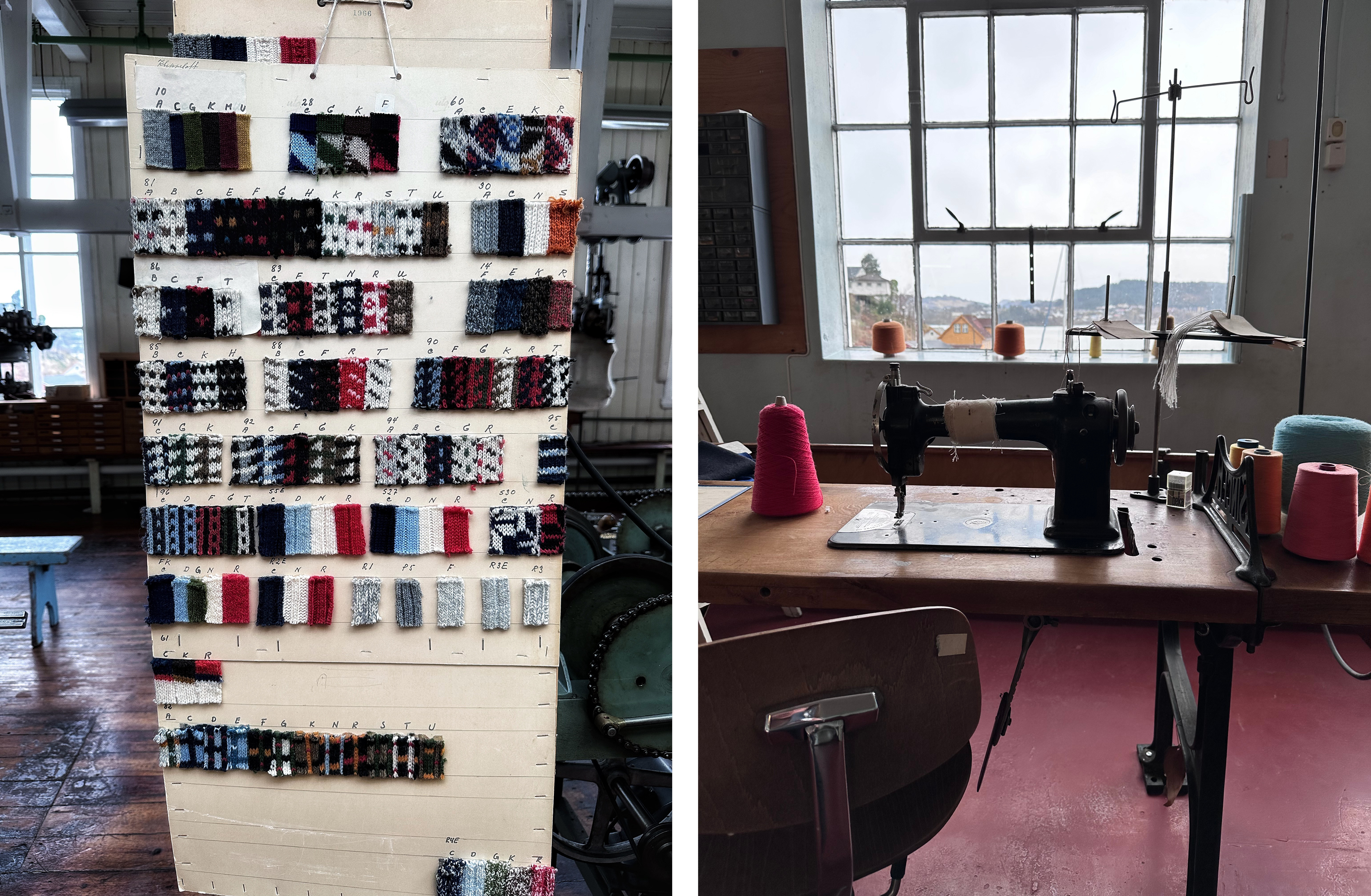
Left: Knitting samples. The limitations of the circular knitting machines at the timegave rise to many of geometric motifs often associated with Nordic knitwear. Right: One of the arguably better sewing stations out of about 30 in the large room.
The privilege of choosing to be a process over product maker and knitter is not lost on me as I slowly wander up and down the long aisles between each row of heavy machinery. Had I been a woman during the height of the Salhus factory’s operation, it’s very likely my options would have been much more limited. My livelihood (and perhaps my whole family) may well have fully depended on how many finished garments I could produce.